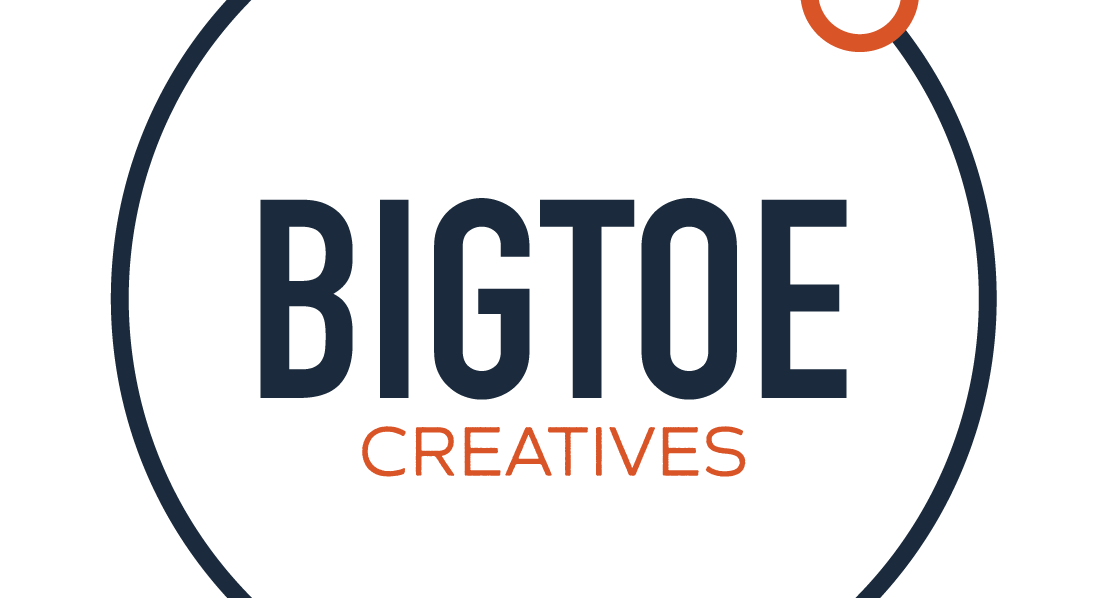At BigToe Creatives, we don’t just create logos – we do creative, innovative and memorable. We’ve been offering our company branding services for both small and big businesses. That’s because we’re big on doing brand development that encompasses a full brand journey, from ideation to implementation. We thought it would be fun to let you in on our branding process (because we can’t get together and share a glass of wine like we used to).
So, you can look forward to us sharing some of our thoughts and tips. We’re going to start with understanding key branding areas: creating a brand and the branding process, branding elements and strategic brand management. It’s more fun than it sounds, we promise!
Creating a brand
A core part of creating a brand is understanding what is involved in the overall branding process. We must understand what it means to create a brand, and what a brand really is. A brand isn’t just a sleek logo or funny slogan, as much as we’d love it to be that simple!
Your brand is your customer’s overall perception of your business, or what your customers think about you when you’re not around. It’s your reputation, and because it’s so important to uphold, you must spend time building up your brand.
Brand building is a key part of the branding process and shouldn’t be brushed aside. To build a brand effectively, there are a few areas where you’ll need to do some research, including:
- The purpose behind your brand. Why your brand exists, what differentiates you, what problems can you solve and why should people interact with your brand? This is where you should spend a lot of time understanding why and how you want to create your brand.
- Competitors in your industry that you’ll face. What are they doing well, and where are they falling short? How can your brand offer something different and stand out? Consider creating a spreadsheet to document your industry competition.
- Your target audience. Who are you focusing on? How can you meet their specific needs? It will be helpful to create a few audience personas. As much as you might dismiss companies who use memes and viral videos to gain attention, they’re doing something right by being relatable to their audience!
- Your brand mission statement. What value does your brand provide? What are you passionate about? This is vital, as it will influence the tone, voice, message and personality of your brand. The good news is that you can keep growing your brand mission, like your delicious monster on the balcony.
We wish it was as easy as creating a few beautiful Instagram posts, but the reality is that you’ve got to spend a lot of time and energy understanding every element of your brand. Only after you’ve done this should you start doing the fun visual stuff, like crafting a brand logo and tagline, building a brand story, nailing your brand personality and tone, and integrating your brand into every part of your business. We promise that it’s worth the long hours!
Don’t get confused between brand creation and digital presence. Having a digital presence includes things such as SEO and content marketing, social media marketing, web design for a positive user experience, high-quality imagery and more. These are all things which are useful and can be used to amplify your brand’s value to your audience, but these elements don’t constitute your brand on their own. These are channels for you to explore once you’ve already got the bulk of your brand creation done. It’s like comparing apples with oranges, really!
Branding elements to consider
We know that it seems quite complicated so far, so we’re going to simplify some branding elements that you should consider when going through the branding process.
- Brand name. We all know that Apple and Google got lucky with the one-word names; but what your brand name really needs is something innovative and which relates to the identity, product, service or core values that you’re offering. It’s a good idea to include a word that links your brand to the industry you’re in.
- Brand logo. This is a visual trademark and will become the face of your brand. It embodies your entire brand experience. You’ll want to carefully select your typography to reflect your brand personality (but please don’t use Comic Sans).
- Brand colours. This is related to the logo and should be simple. You might want to read about colour psychology, because your colours can express different emotions that will be tied into your brand. For example, red expresses passion and energy, while blue is calming. Tints and shades will also matter here.
- Tone of voice. You should be consistent when you communicate to your customers, regardless of where this might happen.
- Photography. High-quality images or nothing. Seriously, you’ll look unprofessional if you are using poor quality or low-resolution images. You can choose a photography style that suits your brand, and you can use your photos for a whole lot of things.
- Brand personality. Think of your own personality as a human. These are emotional and personal qualities that will be associated with your brand. Are you an introvert or extrovert?
Of course, there are a lot of other branding elements that you should think about, but we think this is a great starting point.
Strategic brand management process
This is something which hasn’t been covered so far and involves something called brand equity. This involves consumer perception of your brand, the negative and positive effects on your brand and your overall brand value.
A strategic brand management process focuses on taking brand equity to new heights! The purpose of this is ultimately to add value to the brand. There are a few elements involved here, including brand positioning, brand marketing, brand performance and brand value.
Brand positioning is the act of tailoring your company image and offer so that it can occupy a clear and valuable place in the mind of your target audience.
Brand marketing is self-explanatory, and involves a digital presence like we already mentioned, as well as choosing specific brand elements, creating marketing strategies and using existing brand associations. These could include cultural events, sport events, countries or even existing characters.
Brand performance involves auditing your brand, understanding costs and financial impacts of marketing, and measuring your brand to make decisions later.
Brand value involves defining a clear brand strategy, managing your brand equity over time, and identifying opportunities across different countries, market segments and cultures.
A good strategic brand management process would cover all these things – and more. This is something that you’d probably need expert help with because it’s quite complex. So, you can always contact us for more information about how we can implement strategic brand management for your brand!
Last few thoughts
The truth is, it’s not really that easy building a brand from scratch. We’ve covered a lot of different areas of consideration that you’d need to take a stab at when crafting your brand. We believe that with enough thought, time and effort, you can create a magical brand. The key areas to remember are discovering branding elements to develop, understanding the elements behind creating a brand and a strategic brand management process to accentuate all your branding efforts.
We’re here to walk you through all of this – get in touch with us at BigToe Creatives. We are a brand agency after all!





